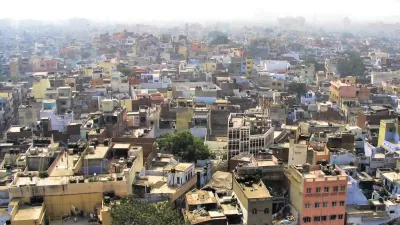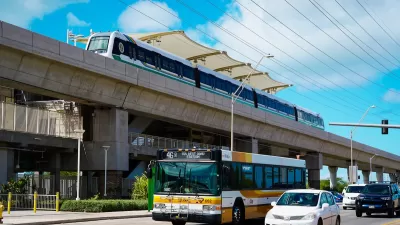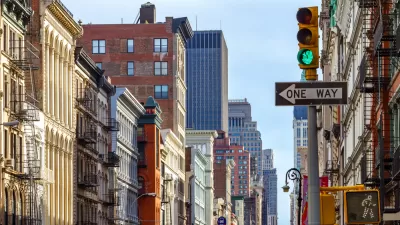They're among the most populous cities in the world. So why are India's largest cities virtually bereft of skylines? Mark Bergen explores the answers.

Bergen reports from Bangalore, a city more populous than New York or Hong Kong, where one of the tallest buildings is only 420 feet.
"Cities in China and southeast Asia rise high, but Indian ones did not. Most grew like Bangalore: outwards and compact. Their skylines are almost nonexistent. And their urban ills -- millions without housing, millions more facing exorbitant rents and crumbling infrastructure -- are often given the economic prescription to grow up."
"It leads to a natural question: Why aren't Indian cities that tall? But there are others who pose a very different query: Why should they be?"
Limits on the availability of resources like electricity and water form a natural deterrent to vertical construction. "But the culprit for most Indian cities is the tight rein on building codes," explains Bergen. "The floor-area-ratio in Bangalore, up to 3.25 but around 1.25 in many areas, requires builders to pay for pricey land plots if they want to build up. (In a recent midtown rezoning, Manhattan proposed FARs as high as 24)."
Despite an institutional bias towards sprawl and low-rise housing, "some cities are now looking up. Recently, the national urban development minister urged New Delhi to permit more skyscrapers, and Gurgaon, a booming city in its periphery, floated an increased FAR. Bangalore, too, is seeing a slew of lofty, vertical projects."
FULL STORY: Why India Keeps Its Cities So Short

Alabama: Trump Terminates Settlements for Black Communities Harmed By Raw Sewage
Trump deemed the landmark civil rights agreement “illegal DEI and environmental justice policy.”

Study: Maui’s Plan to Convert Vacation Rentals to Long-Term Housing Could Cause Nearly $1 Billion Economic Loss
The plan would reduce visitor accommodation by 25% resulting in 1,900 jobs lost.

Planetizen Federal Action Tracker
A weekly monitor of how Trump’s orders and actions are impacting planners and planning in America.

Wind Energy on the Rise Despite Federal Policy Reversal
The Trump administration is revoking federal support for renewable energy, but demand for new projects continues unabated.

Passengers Flock to Caltrain After Electrification
The new electric trains are running faster and more reliably, leading to strong ridership growth on the Bay Area rail system.

Texas Churches Rally Behind ‘Yes in God’s Back Yard’ Legislation
Religious leaders want the state to reduce zoning regulations to streamline leasing church-owned land to housing developers.
Urban Design for Planners 1: Software Tools
This six-course series explores essential urban design concepts using open source software and equips planners with the tools they need to participate fully in the urban design process.
Planning for Universal Design
Learn the tools for implementing Universal Design in planning regulations.
Caltrans
Smith Gee Studio
Institute for Housing and Urban Development Studies (IHS)
City of Grandview
Harvard GSD Executive Education
Toledo-Lucas County Plan Commissions
Salt Lake City
NYU Wagner Graduate School of Public Service




























